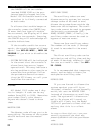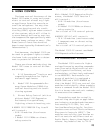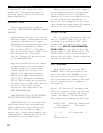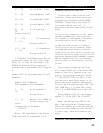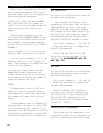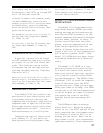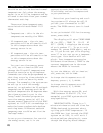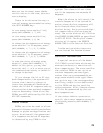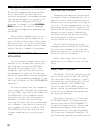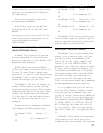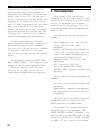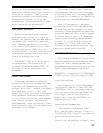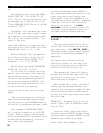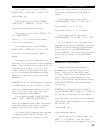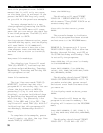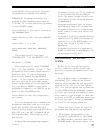
30
Home Automation, Inc.
TEMPERATURE ALARMS
Temperature sensors can be used
to signal that a temperature (in a
special room, like a greenhouse or
wine cooler) has gotten too high or
too low. If the temperature in this
zone goes above the HI setpoint or
below the LO setpoint, the console
beeper is activated (inside and
outside sirens are not activated)
and the central station and/or
voice dialer is called.
The HI and LO setpoints are
changed as described for the PESM.
Use the zone number that the tem-
perature sensor is connected to in
place of the unit number.
NOTE: Setting a LO or HI tem-
perature to 0 takes it out of ser-
vice.
DIRECT RELAY CONTROL
The Model 1503 has three outputs
that can be used to switch relays.
Two are Auxiliary Outputs 1 and 2,
and they are available only if not
used by a Model 1101 PESM. The
third is the OK TO ARM output,
which can be reassigned from that
function to a general purpose out-
put by your dealer.
Auxiliary Outputs 1, 2 and the
OK TO ARM output (if reassigned)
are controlled as UNIT NUMBER 17,
18 and 19 respectively. These are
hardwired outputs that are con-
nected directly through the Model
1503 and not through a module. If
you have had something connected to
Outdoor temperature zones have a
HI and LO temperature associated
with them that can be used for
control purposes. An example where
the bathroom heat is turned on if
the outdoor temp goes below 60
degrees is shown in the PROGRAM-
MING section. HI and LO tempera-
tures are changed the same way as
the PESM.
The outdoor temperature is an-
nunciated over the telephone as
part of the status menu (main menu
selection 6). It is also annunci-
ated through the home control menu
after the unit number is entered.
TEMPERATURE CONTROL OF
APPLIANCES
You can control appliances con-
nected to X-10 modules (such as a
ceiling fan) using the BUTTONS
feature of the Model 1503. For
example, the ceiling fan can be
programmed to come on if the tem-
perature goes above the HI tempera-
ture. (A programming example to set
this up is shown in the PROGRAMMING
section.)
HI and LO setpoints for tempera-
ture zones are changed the same way
as the PESM. Use the zone number of
the PESM for “unit number” when
changing the HI and LO setpoints.
However, on/off control of the
ceiling fan may involve a different
unit number. Use the ceiling fan's
unit number to turn it ON or OFF.
The PESM and the ceiling fan are
linked together by a button pro-
gram.



